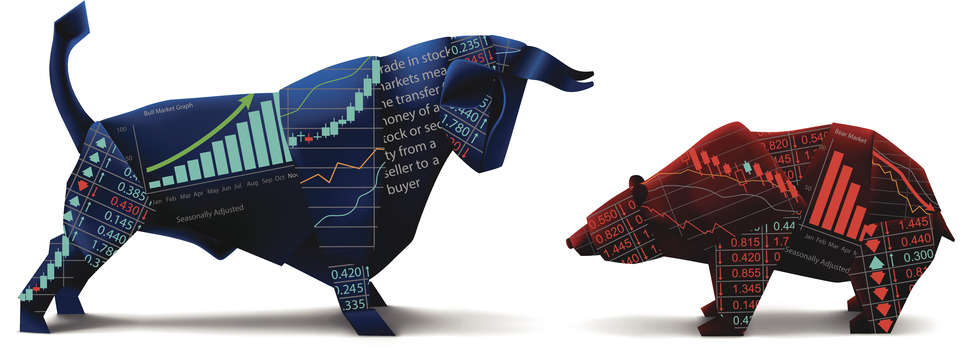
They went up, of course. Just like they always do.
Some people have expressed wonder… and doubt… that the equity value of America’s businesses can increase so much even while national leadership is in so much disarray.
Republicans can’t work with Democrats. Democrats can’t work with the president. And Republicans can’t work with the president, either… or each other.
Together… they can’t work at all.
Primary Trend
At the start of the year, analysts explained stock market gains as a “reflation trade.”
The idea was that lower taxes and more infrastructure spending under the new Trump administration would set off an economic boom with higher growth rates, higher sales, higher inflation… and, of course, higher stock prices.
None of those things happened – except the higher stock prices.
Go figure.
We wish our old friend Richard Russell were still alive to help us figure it out.
Richard studied the stock market, day by day, for over half a century in his newsletter, Dow Theory Letters. He started his career in New York and ended it in La Jolla, California, keeping his eye on the stock market all the time.
Until the end of his life, his instincts were sharp.
It was Richard who introduced us to the idea of big, long movements in stock prices – what he called the stock market’s “primary trend.”
Yes, the market goes up and it goes down… apparently at random. But over the long run, it also follows patterns – moves that you can only see from a distance.
The idea is to buy near the bottom and sell near the top. Everything else is detail.
Ringing the Bell
After World War I, gold – real money – flowed into the U.S. France and Britain had borrowed heavily and were now repaying.
This increase in the money supply – along with the invention of automobiles, electric appliances, and consumer credit – set off a boom.
Stocks soared and everyone wanted to get in on it. By the late 1920s, waiters were getting rich. And shoeshine boys were giving stock tips (which is supposedly what convinced JFK’s father, Joseph Kennedy, to sell out).
“The stock market will always find your weakness and exploit it,” Richard would say.
Greed is a weakness. Envy is another. A 6% return is fine… until your brother-in-law makes 10%.
When stocks go down, everybody wants out. When they go up, everybody wants in. And when everyone has bought into the myth of ever-rising stock prices, it’s time to sell.
“They don’t ring a bell at the top,” say the old-timers.
But the old-timers, like Richard, heard bells ringing anyway.
As it happened, stocks collapsed in 1929… the margin calls went out… investors lost fortunes… banks failed… the Hoover and Roosevelt administrations intervened… and the Great Depression took hold.
Stocks hit bottom in 1933. Then they recovered. But they didn’t return to their 1929 values until 1956 – 27 years later.
From there, the U.S. stock market kept heading up for another 10 years. This brought the primary bull market trend to 33 years. But by then, the old fellow was losing his vim and vigor.
That was the era of the Nifty Fifty – 50 large “growth” stocks that investors believed would dominate the world and make them all rich by simply buying and holding.
Naturally, those 50 stocks – including the now-defunct photographic film and camera makers Eastman Kodak and Polaroid – led the market higher.
Bear’s Lair
But another of Richard’s dicta was “the bear always wants to take as many people down as possible.”
We invent reasons to do dumb things. Instead of doing careful stock market research, mom-and-pop investors simply rushed into the Nifty Fifty… directly into the bear’s lair.
By August of 1966, the top was in, with these “one decision” stocks at their peak.
Richard, who was already on the job, heard the bells ringing. And for the next 16 years (though the numbers are distorted by high inflation rates during this period), stock prices fell.
By the early 1970s, stocks were reaching another major low. At one point, you could have bought the Dow Industrials for just one ounce of gold.
In 1979, Businessweek magazine published its famous “Death of Equities” cover story. But equities weren’t dead at all. They were just reviving after a long primary trend lower.
What followed is recent history. Starting in 1982, stocks began a new bullish primary trend… and rose for almost two decades. In the summer of 1999, thanks to the wonders of the internet, investors thought they had entered a “new era” of ever-rising stock prices.
It was not to be
The dot-coms crashed. But investors were right in another sense. It was a new era of financial hocus-pocus, with the feds intervening to support stock prices as they never had before.
After former Fed chief Alan Greenspan rushed to pump up stocks in 1987, the fix was in.
Since then, stocks have tried to correct twice. The Nasdaq collapsed in 2000; the entire U.S. stock market took a plunge in 2008.
Each time, the Fed came to the rescue. In 2009, it mounted its largest bailout ever. It stuffed the financial sector with $3.6 trillion of fake money via three separate quantitative easing (QE) programs.
And now – taking 1982 as the beginning point – this bull run has been romping for 35 years.
What would Richard say about it?
“I don’t know…” says a voice from the grave.
“It could be my cell phone. Or it could be my tinnitus acting up. But I hear something ringing…”
Regards,
![]()
Bill
Category: Economics

